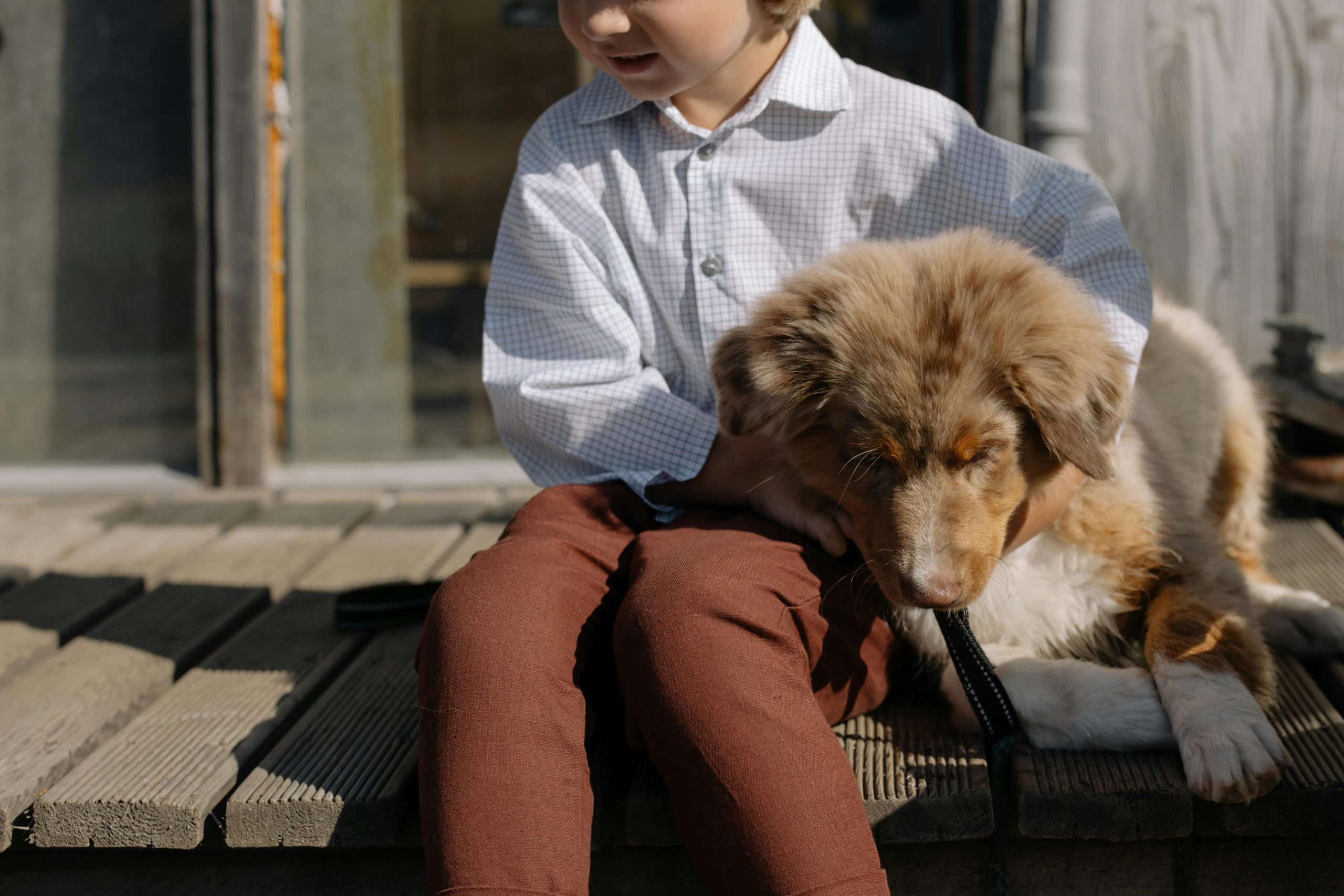Your Australian Shepherd, with its vibrant energy and remarkable intelligence, is not just a pet but an integral part of your family. These dogs are born herders, and their natural instincts can sometimes create unique challenges in a domestic environment. However, with a balanced approach, you can train your Australian Shepherd for herding while still maintaining their role as a beloved family pet. Let’s delve into this fascinating journey of canine training.
Understanding the Australian Shepherd’s Nature
Before we jump into the training tips, let’s first get to know the Australian Shepherd breed a little better. Their unique personality and instincts make them different from other dog breeds.
A découvrir également : What’s the Ideal Diet for a Dog with EPI (Exocrine Pancreatic Insufficiency)?
Australian Shepherds, popularly known as Aussies, are a breed that was developed in the United States to herd livestock. They are well-known for their exquisite work ethics, intelligence, agility, and loyalty. Aussies are incredibly energetic dogs that require constant mental and physical stimulation.
When it comes to their herding instinct, Australian Shepherds have a strong natural inclination. Herding is more than just a job for them, it’s almost an obsession. They are more than capable of managing large herds, and their nimble minds make them excellent problem solvers.
Dans le meme genre : How to Build a Safe and Engaging Indoor Playground for a Cat with Limited Vision?
However, these herding instincts can sometimes lead to difficulties in a family setting. Aussies are known to herd anything that moves – from your children to your cars. They also have powerful protective instincts, which can sometimes be misconstrued as aggression. But fear not, understanding these natural instincts is the first step in training your Aussie to balance their herding instincts and family life.
Train Your Australian Shepherd Early
The key to training any dog breed, especially one as energetic and intelligent as an Aussie, is to start early. Training your Australian Shepherd puppy to balance their herding instincts and family life necessitates a good understanding of their needs and behavior.
Training your Aussie puppy can start as early as eight weeks old. Your puppy is a blank canvas, and the earlier you start, the easier it will be to shape their behavior according to your family’s needs.
The first step to training an Australian Shepherd for herding is to channel their energy correctly. This breed requires a lot of physical exercise to keep them mentally and physically fit. Regular and structured playtimes, long walks, and mentally stimulating games are some ways to ensure this.
Use Positive Reinforcement Techniques
One of the most effective techniques for training your Aussie is using positive reinforcement. Aussies are eager to please their owners and respond well to rewards-based training.
Positive reinforcement involves rewarding your dog immediately after they display a desirable behavior. This can be a treat, a toy, or even verbal praise. Over time, your Aussie will associate this positive outcome with the behavior, thereby promoting its repetition.
When it comes to herding, use positive reinforcement to encourage controlled herding behavior. For instance, if your Aussie is showing signs of wanting to herd, guide them towards doing so in a controlled manner. Once they accomplish this, reward them immediately. This teaches them that controlled herding behavior gets rewarded, while uncontrolled does not.
Socializing Your Australian Shepherd
Socialization is another crucial aspect of training your Australian Shepherd. It involves exposing your Aussie to a variety of people, places, situations, and other animals to help them become familiar with different environments and behaviors.
Socializing your Aussie can start as early as when they are a puppy. This will help them understand that not everyone or everything that moves is meant to be herded. Instead, they’ll learn to differentiate between who or what to herd and who or what not to.
Bringing friends over, taking your Aussie to parks, or enrolling them in puppy classes are some ways to socialize them. The more your Aussie is exposed to different situations, the more adaptable and well-balanced they will be.
Seeking Professional Help
Training an Australian Shepherd for herding while maintaining their role as family pet might be a daunting task. It requires patience, consistency, and a deep understanding of your Aussie’s behavior. If you’re struggling, don’t hesitate to seek professional help.
Professional dog trainers and behaviorists can provide valuable insights into your Aussie’s behavior and suggest customized training strategies. They are trained to understand different dog breeds and can provide guidance based on your Aussie’s specific needs.
Remember, every Australian Shepherd is unique, and what works for one might not work for another. Training your Aussie is a journey that requires patience and perseverance. But the end result – a well-trained Australian Shepherd that can balance its herding instincts with being a loving family pet – is worth every bit of the effort.
Managing Your Australian Shepherd’s Protective Instincts
Expounding on the Australian Shepherd’s nature, their protective instincts are as strong as their herding instincts. Being inherently protective, these dogs are not only great herders but also excellent watchdogs. However, this protective nature can sometimes be misconstrued as aggression, especially when they are around strangers or in unfamiliar settings. It is therefore crucial to manage these protective instincts to strike that necessary balance between a family pet and a herding dog.
Firstly, your Australian Shepherd should be taught to understand that not all situations call for their protective instincts. This involves clearly communicating to your dog what is considered a threat and what is not. When your Aussie responds aggressively to a non-threatening situation, a firm ‘No’ or ‘Stop’ will communicate your disapproval. Over time, your dog will learn to associate this response with undesirable behavior.
Secondly, Australian Shepherds should be exposed to different situations that require them to exercise discretion. As suggested earlier, socializing your Aussie with other dogs, people, and environments will contribute significantly to this. Regular walks in the park, visits to friends, or even doggy daycare can provide new experiences that will help your Aussie understand when to be protective and when to be relaxed.
Lastly, consistent training is key when managing your Aussie’s protective instincts. Like herding, controlling these instincts will need time, patience, and consistency. Over time, your Aussie will learn to differentiate between what constitutes a threat and what doesn’t, making them a more balanced and adaptable family pet.
Conclusion: Embrace the Journey of Training Your Australian Shepherd
Training your Australian Shepherd to balance its herding instincts with being a loving family pet might seem like an uphill task, but it is indeed achievable. Understanding the unique nature of Australian Shepherds, training them early, using positive reinforcement, socializing them, and managing their protective instincts are critical steps towards achieving this balance.
Remember, training your Aussie is a journey. It might seem daunting at times, but the rewards are immeasurable. A well-trained Australian Shepherd has the potential to be one of the most loyal, intelligent, and versatile dogs you could ever own.
Your Aussie is not just a pet, but an integral part of your family. With consistent training and boundless love, you can help them fulfill their natural instincts while still being a wonderful family pet. Stay patient, be consistent, and above all, enjoy the journey!
In conclusion, your Australian Shepherd is a herding dog at heart. With patience, consistency, and understanding, you can harness these instincts to have a dog that is not only a great herder but also a beloved family pet. Happy training!





